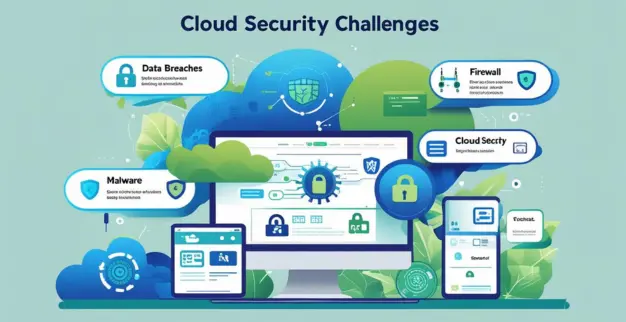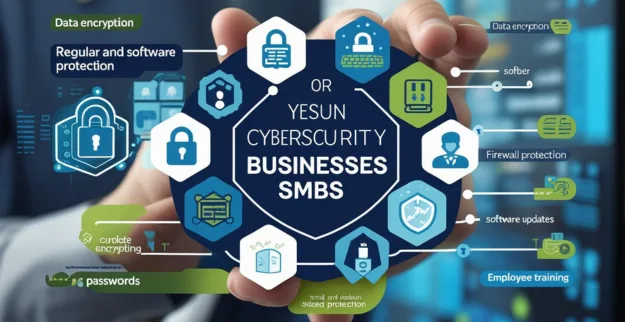Cloud Security Challenges: How Businesses Can Stay Protected
By: Ganesan D
23 Aug 2025
Category: Cloud Security
As more businesses shift their operations to the cloud, they enjoy flexibility, scalability, and cost-efficiency. But this transition isn’t without risk. From misconfigurations and data leaks to unauthorized access, cloud environments present unique vulnerabilities that demand thoughtful strategies. Here’s how organizations can stay safe while reaping the benefits of the cloud.
1. Why Cloud Adoption Brings Security Risks
Cloud adoption transforms your infrastructure—but it also reshapes your security perimeter. Unlike static, on-prem setups, the cloud involves dynamic, distributed environments across multiple platforms. Multi-cloud, hybrid, and SaaS use are blurring boundaries and creating fragmented control surfaces that outpace traditional security strategies.
Moreover, the shared responsibility model means that while cloud service providers (CSPs) handle infrastructure security, businesses must manage configuration, access control, and data protection. Misunderstanding this balance can expose gaps. Attackers exploit these gaps—misconfigured buckets, weak interfaces, or blurred visibility—to infiltrate systems quickly.
2. Common Cloud Misconfigurations and Their Impact
Misconfigurations remain the most common cloud security threat. Nearly 23% of cloud incidents stem from setup errors, with human error responsible for a whopping 82% of misconfigurations.
Frequent slip-ups include:
- Publicly exposed storage (e.g., buckets opened by mistake)
- Overly permissive IAM roles
- Insecure API keys or interfaces
- Unsecured backups or default configurations
These misconfigurations can lead to unauthorized access, data breaches, ransomware attacks, and reputational loss. One classic example (though earlier) involves companies like WWE and Verizon accidentally exposing sensitive customer data due to misconfigured cloud storage.
3. Role of Encryption in Cloud Security
Encryption is the shield that protects data, even if attackers bypass access controls. It safeguards data both in transit and at rest, rendering the data unreadable without the correct keys.
Yet, adoption isn’t universal—only 10% of enterprises have encrypted 80% or more of their sensitive cloud data—leaving a glaring defense gap.
Strong encryption strategies should include:
- End-to-end encryption (transit + at rest)
- Robust key management systems (KMS) to handle generation, rotation, storage, and policy
- Advanced techniques like attribute-based encryption or homomorphic encryption for specialized workloads
Pair encryption with digital forensic readiness—so in case of incidents, you can reconstruct actions, investigate effectively, and respond swiftly.
4. Identity & Access Management (IAM) Best Practices
IAM is the gatekeeper of your cloud environment. Faulty or overly broad permissions pave the way for unauthorized access. Common issues include:
- Overprivileged accounts (excess permissions)
- Lack of multi-factor authentication (MFA)
- Poor management of service accounts, API identities, and credentials
Best practices include:
- Principle of Least Privilege: users should only have the minimum access needed, reviewed regularly
- Enforce MFA on all sensitive or admin access points
- Manage non-human identities (e.g., service accounts, API keys) carefully with rotation and audit
- Implement centralized IAM across multi-cloud or hybrid environments for consistent policy enforcement
5. Continuous Cloud Monitoring & Compliance
Even with strong policies, cloud environments are fluid—demanding vigilance. But current tools are falling short—only 35% of threats are caught automatically; the rest come from users, audits, or external notifications.
Alert fatigue further undermines defenses, as teams drown in false positives and can’t prioritize effectively.
You can improve this by:
- Deploying continuous monitoring (Network, file integrity, user behavior) across all environments
- Adopting Cloud Access Security Brokers (CASBs) or centralized platforms for multi-cloud visibility
- Using AI-powered detection to highlight anomalies faster and reduce noise
- Ensuring real-time compliance tracking, especially with new regulations around AI, data residency, and multi-jurisdiction governance
6. Bringing It All Together: A Humanized Perspective
Moving to the cloud doesn’t mean “set and forget.” It’s a journey that requires equal parts strategy, visibility, and vigilance. Think of your cloud environment like a busy city—not a locked warehouse. You need guards (IAM), cameras (monitoring), locks (encryption), and maps (compliance overview).
Start small and build trust: Begin by securing the most sensitive data, enforcing MFA, and automating misconfiguration detection. As you grow, layer in AI tools, centralized IAM, and robust forensic readiness.
Pair tools with training and culture. Many breaches stem from honest mistakes—so educate teams, build awareness, and bake security into development cycles (e.g., Infrastructure as Code best practices).
Final Thoughts
Why it matters: The benefits of the cloud—agility, innovation, scalability—are real. But so are the risks. Misconfigurations, weak access control, and poor visibility open the door to costly breaches. Encryption, IAM discipline, and continuous monitoring are your allies.
Bold action: Make cloud security an ongoing part of your strategy—not an afterthought. Align tools, policies, and people. Monitor constantly. Adapt as your cloud grows.
By addressing misconfiguration, enforcing encryption, tightening access, and keeping an eagle eye on activity and compliance, businesses can confidently move forward—and thrive—in the cloud.



